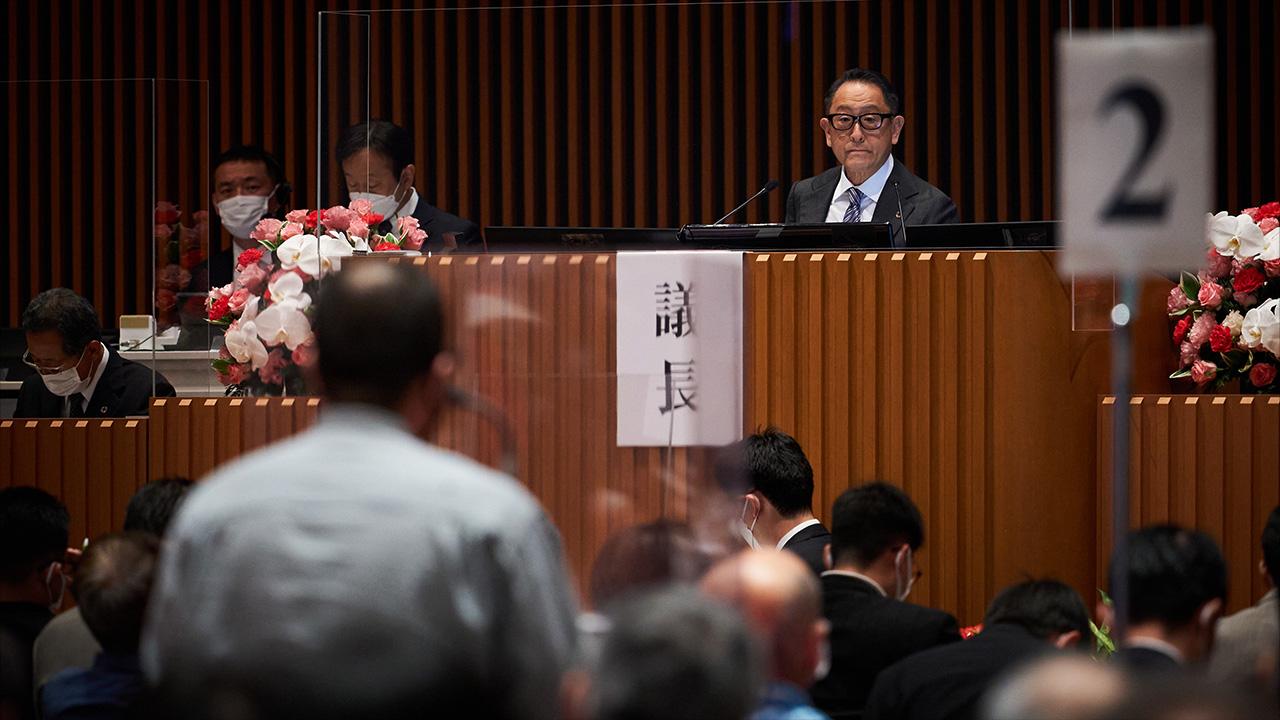
The 90-minute Q&A session covered topics ranging from the local to the global, past and future. This article focuses on six major questions.

At Toyota’s General Shareholders’ Meeting, 90 minutes were devoted to questions and answers ranging from immediate concerns to future-focused initiatives.
Toyota Times shares the Q&A’s main discussions in two articles: the first one here reports on Toyota’s response to key business topics such as the chip shortage and carbon neutrality.
Chip shortage
In 2020 and 2021, Toyota asked shareholders to refrain from attending the company’s annual meetings in person as part of its COVID-19 prevention measures.
While no such request was made this year, Toyota allowed shareholders to submit questions online for those who wanted to ask questions but couldn’t come to the venue.
Two of the most important questions opened the Q&A session, starting with the state of the current chip shortage and Toyota’s response.
Purchasing Group Chief Officer Kazunari Kumakura described the current situation and countermeasures after apologizing to stakeholders for the disrupted vehicle production and delivery delays.
Kazunari Kumakura, Purchasing Group Chief Officer
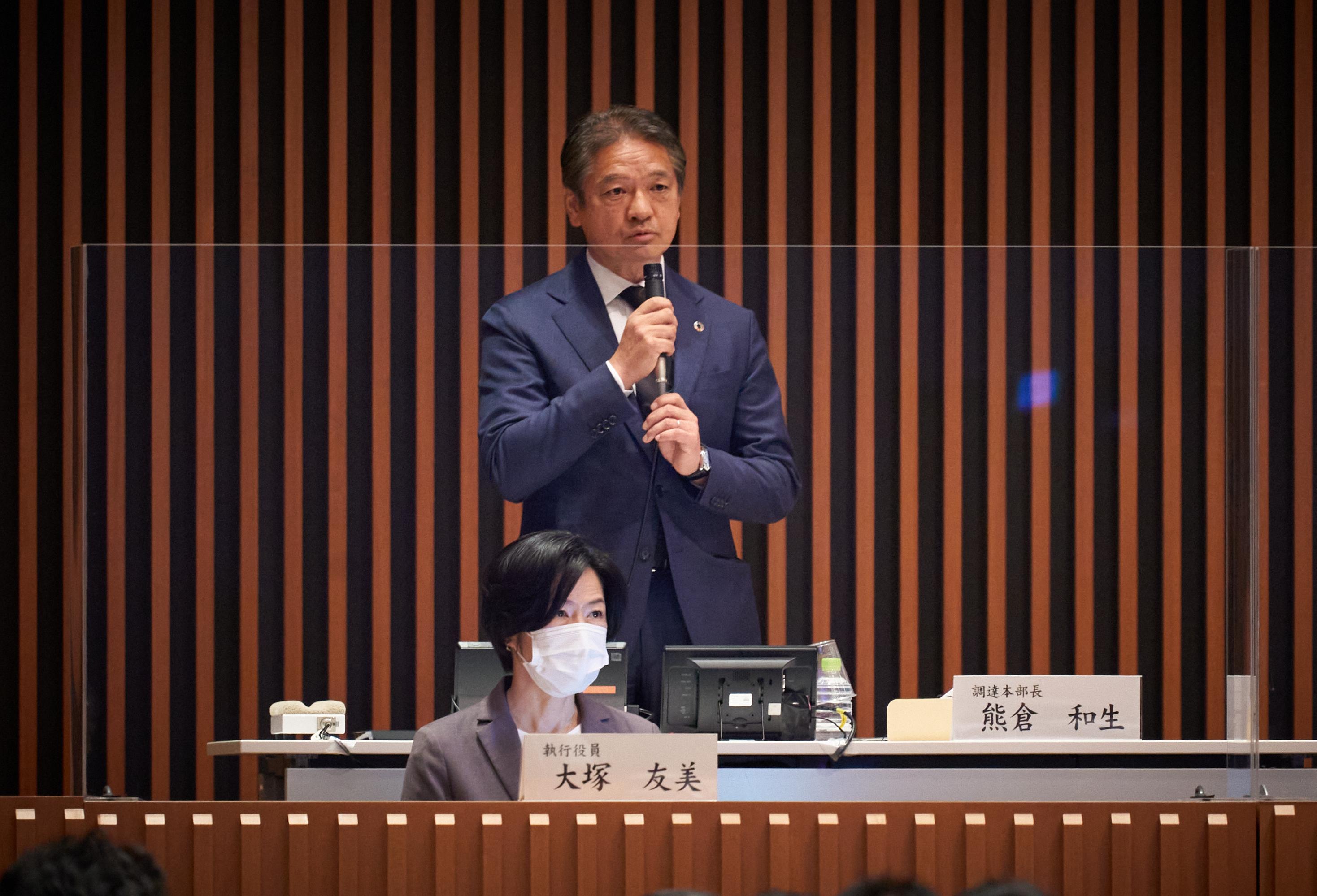
A single car requires around 1,000 chips of various types, ranging from brake control to navigation and audio. We can’t make cars if we lack even one of these.
Vehicle electrification and advances in automated driving make chips increasingly critical components
We asked our suppliers to stock three to six months of inventory in response to similar chip supply difficulties after the 2011 Great East Japan Earthquake. Even so, the current tight chip supply and strong demand make it very hard to maintain inventory and production.
We sense the supply situation gradually improving as chip manufacturers boost production capacity. However, supply is still unable to keep up with demand. We will continue working with suppliers to get production going.
One concrete measure will involve building up inventory to prevent impacts on production. We are also establishing strong relationships with chip manufacturers via parts manufacturers, and clearly communicating our manufacturing plans to facilitate smooth production.
Discussions within the Japan Automobile Manufacturers Association’s supply chain committee inform me that other automakers are in a similarly difficult state.
We will also communicate with other automakers and the Ministry of Economy, Trade and Industry to develop measures for improving the overall chip supply.
Electrification & carbon neutrality
The other top advance question was about Toyota’s electrification strategy to achieve carbon neutrality.
Overseas investors had also asked whether Toyota’s policy communications and public relations activities were consistent with targets laid out in the Paris Agreement, an international framework for combating climate change.
In response, Masahiko Maeda, Chief Technology Officer and Executive Vice President explained the importance of widespread adoption of green technologies, based on Toyota’s unwavering stance on pursuing various electrification options, including battery electric vehicles (BEVs).
Masahiko Maeda, Executive Vice President
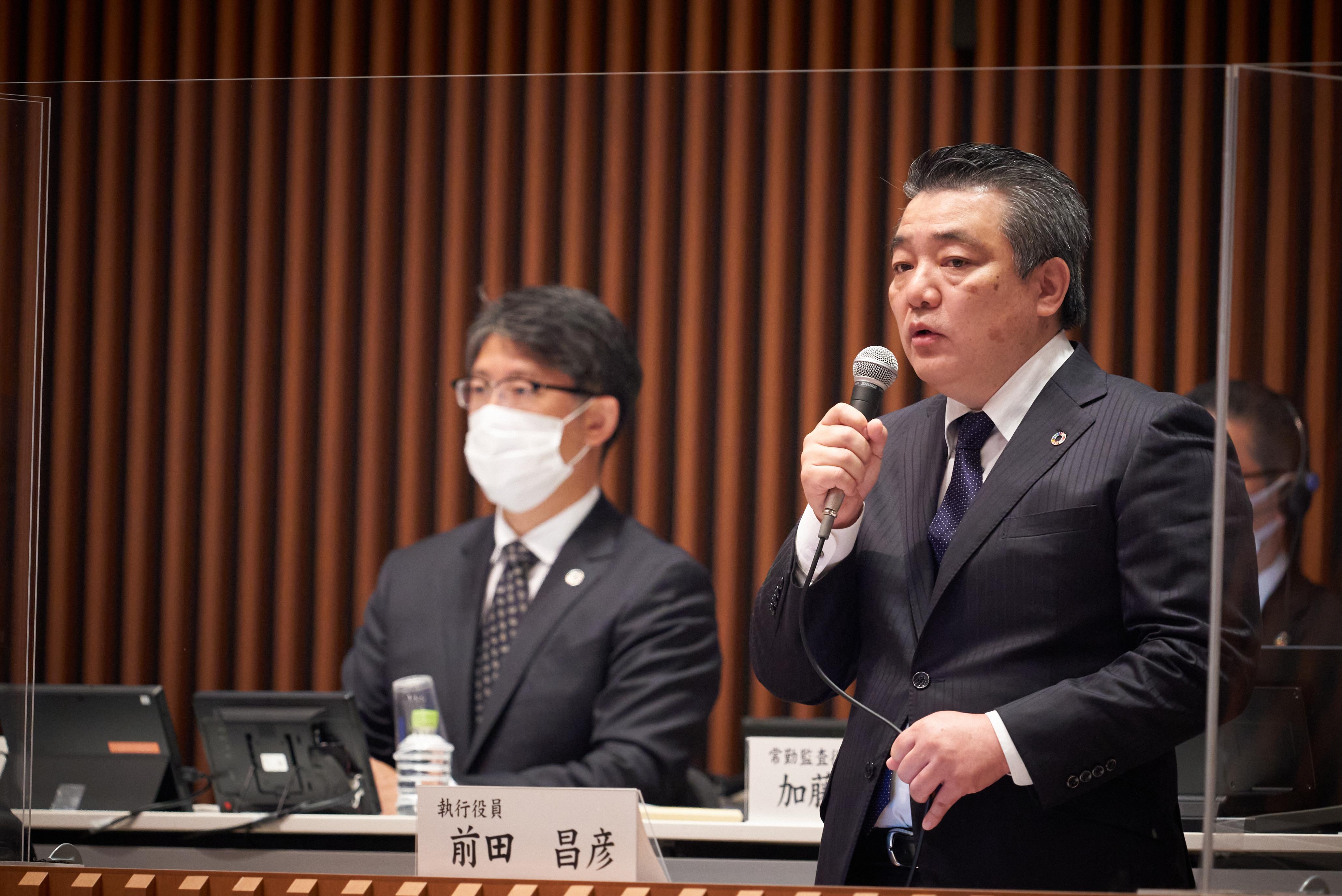
For us, carbon neutrality means eliminating carbon emissions from materials procurement, production, and driving.
We are pursuing various green technologies to achieve this goal, but such technologies become green only through widespread use.
How does a technology become widely used? It must be selected by customers. Different customers have different needs and usage environments. Therefore, I believe we should not limit our options at this point.
Toyota is developing a full lineup of vehicles as a result of trying to meet various customer needs around the world.
Europe, for example, has relatively abundant renewable energy. In such areas, battery EVs and similar options appear likely to spread relatively quickly.
Places like Brazil, meanwhile, already have cars running on biofuels made from sugarcane, available at prices 30% cheaper than gasoline.
As a result, bioethanol is currently the preferable choice for consumers in these regions.
We need to ensure that our products fit these different regional conditions and customer preferences.
From a policy communications perspective, the key question is: “How do we increase uptake?” To this end, we need to continue talks with regional policymakers to accelerate carbon-neutral options, including the parallel infrastructure development for BEVs and hydrogen-powered cars.
Major water leaks at Meiji Yosui
After answering the two advance questions, the session was opened to those from shareholders in attendance. One concern was the large-scale leaks at Meiji Yosui Toshuko, a water intake facility in Toyota City, Aichi.
The leaks were detected last month, leading Toyota and its group companies to temporarily suspend plant operations.
The facility has not been fully restored even a month later, with industrial and agricultural water use still restricted.
Asked about the impact on production, Production Group Chief Officer Takahiro Imura expressed his gratitude to those involved in recovery efforts and explained Toyota’s water-saving initiatives.
Takahiro Imura, Production Group Chief Officer
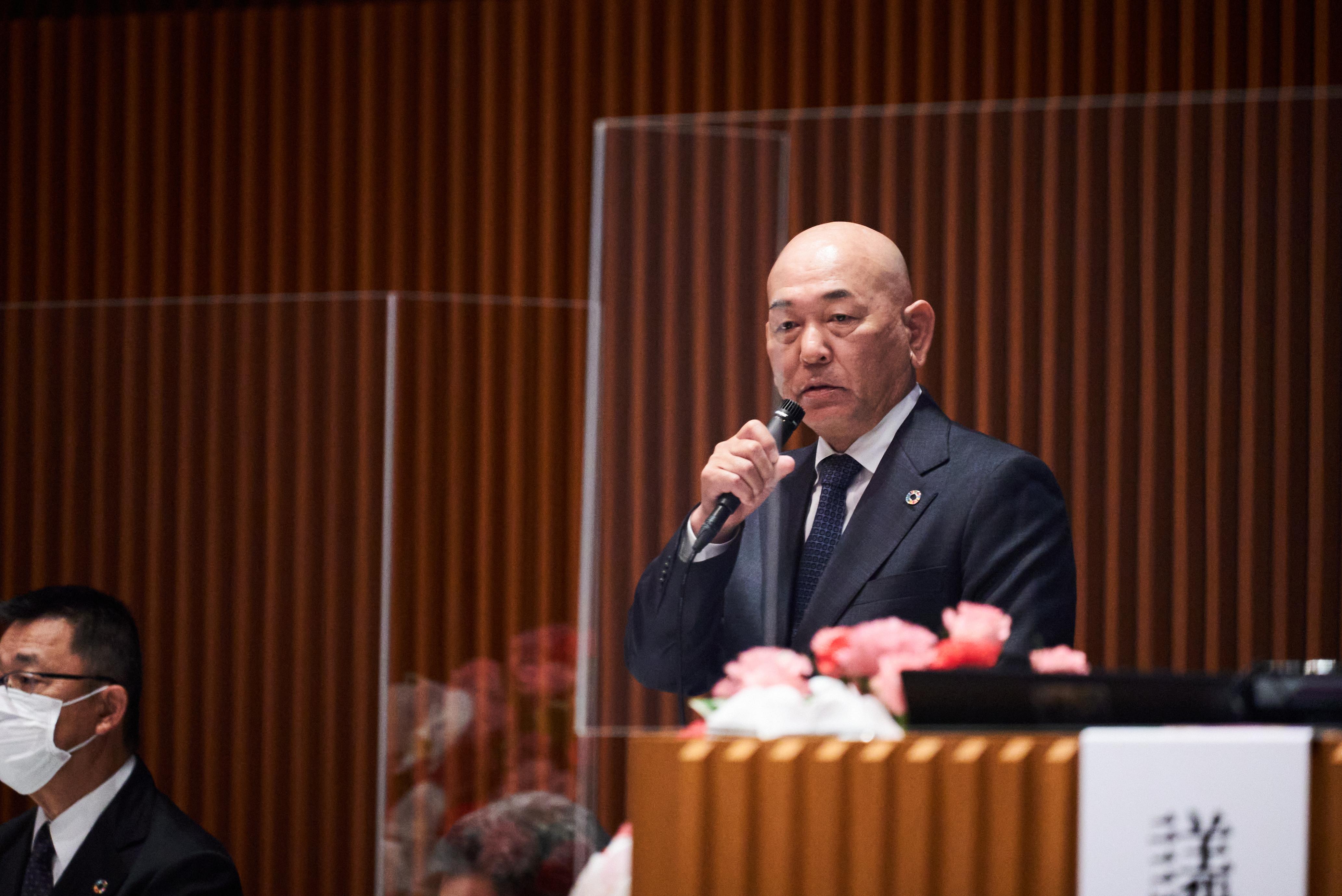
Toyota’s first priority in responding to an emergency is humanitarian aid, followed by regional recovery, and finally production restoration. On this occasion too, we will do our utmost to assist with recovery.
The current situation at Meiji Yosui has led to the suspension of operations at two production lines: the parts-producing Honsha Plant and the Toyota Industries Nagakusa Plant. Approximately 600 vehicles were affected.
We resumed plant operations alongside company-wide efforts to conserve water, such as encouraging remote work, closing cafeterias, and using well water as an emergency measure during unavoidable shortages.
To date, we have also worked to conserve water by eliminating water use in production and making continuous improvements, including water reuse in manufacturing. Our paint shops draw water only to wash cars as they come onto the line.
These improvements have enabled us to halve our industrial water intake compared to 20 years ago. The prospects for full recovery remain highly uncertain. Given that the agricultural water supply has stopped entirely, we will closely monitor the impact on the local community as we continue operations.
Executive Fellow Mitsuru Kawai, who has lived near the facility since childhood, added a comment.
With first-hand experience of growing rice, Kawai appreciated the hardships faced by farmers.
Mitsuru Kawai
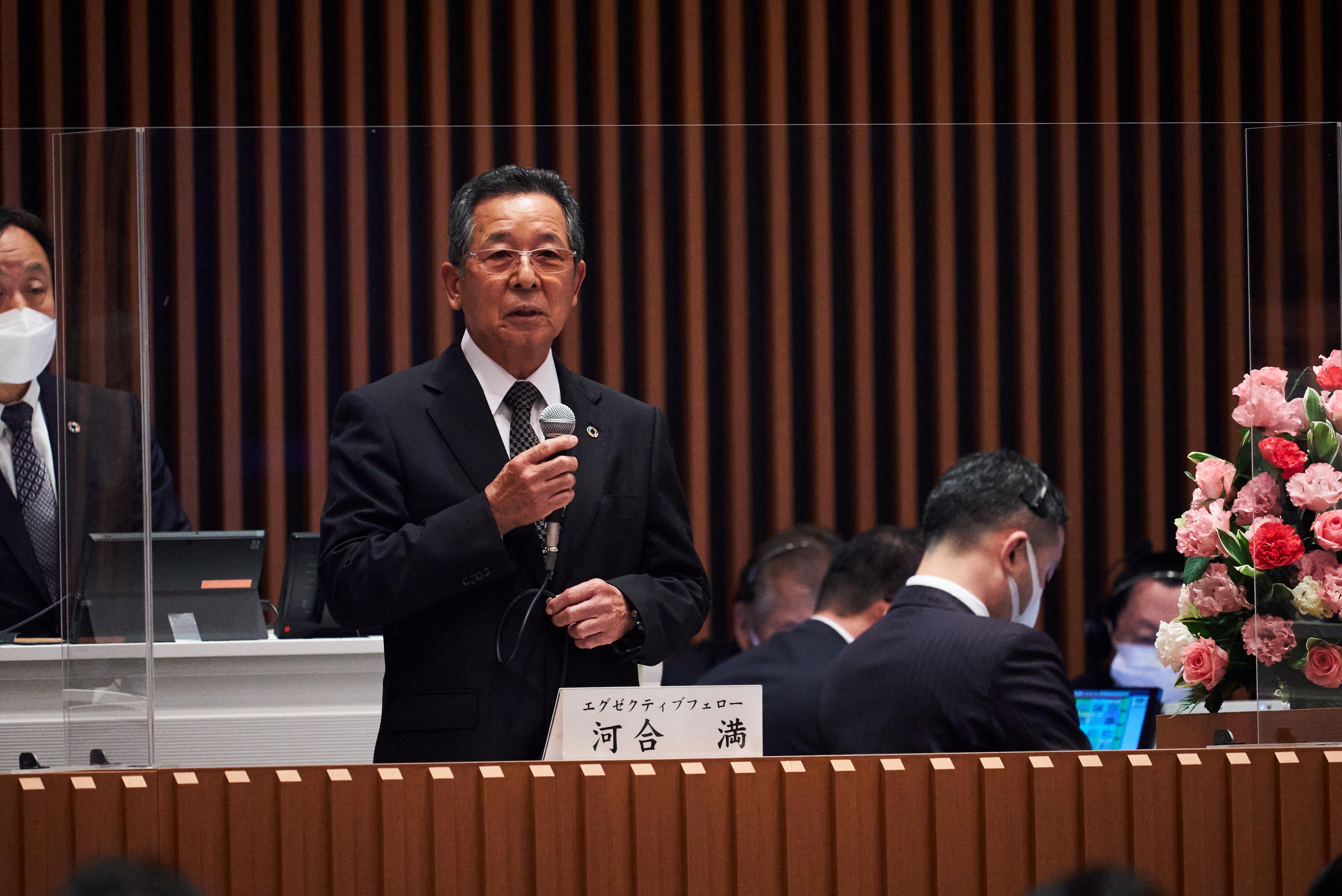
I would just like to add that I commute via the Suigen bridge at Meiji Yosui Toshuko. It was always full of water, so I was shocked to see the riverbed when passing through on May 17. It brought back childhood memories of crossing the river over wooden planks.
I used to grow rice for a long time, so I understand that lacking water at this time of year is a critical situation. Watching the TV footage of planted crops withering and dried up fields that should have been ready for planting, it was truly heartbreaking to think of how the farmers must feel.
Currently, 162 temporary pumps deliver agricultural water once every four days. The industrial water supply is at 50%. In terms of how much industrial water Toyota uses, we are supplied by just 1% of the 162 pumps. We are eager to assist as much as we can.
Every day, I have a chance to see the construction work in progress. Steel plates and sandbags have been used to contain leaks, and water is allowed to flow naturally into the dam. We will also continue doing our part to restore the facility as quickly as possible.
Geopolitical business risks
Questions ranged from local matters in the company’s hometown, like the water leakage shared above, to global issues at Toyota’s shareholders’ meetings.
As a global risk issue, one shareholder raised the topic of Russia’s invasion of Ukraine.
Touching on many companies’ decisions to withdraw from Russia, the person pointed out a similar risk that could potentially occur in Asia, and asked how Toyota plans to deal with such geopolitical business risks given its global operations.
Yoichi Miyazaki, who oversees Toyota’s business outside Japan as Operating Officer and Chief Competitive Officer, answered that question first.
Yoichi Miyazaki, Chief Competitive Officer
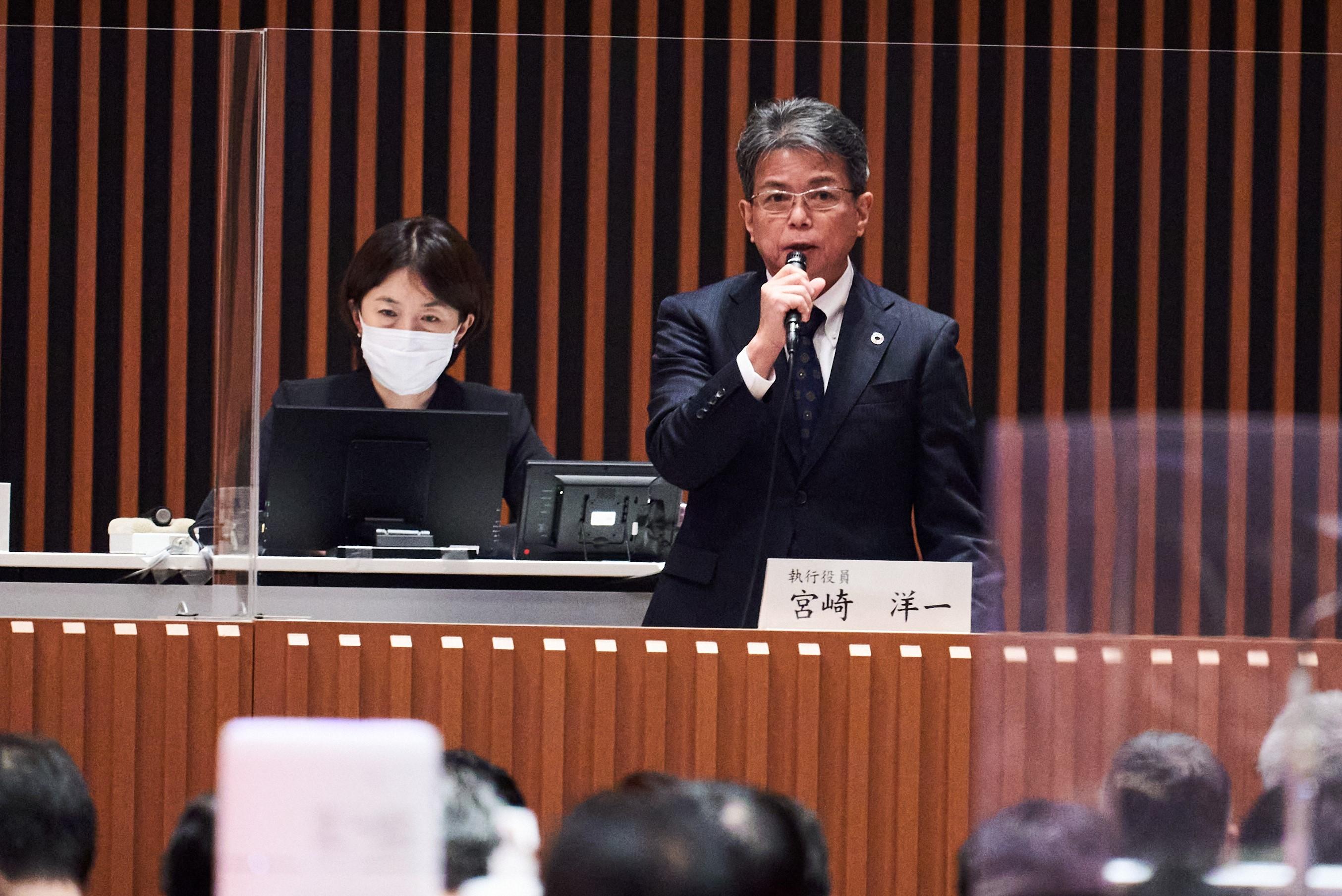
Toyota’s business is driven by the desire to deliver happiness to people in all countries and regions through mobility.
We believe that the first step in producing happiness for all is to deliver quality cars that fulfill the needs of our customers in a timely manner at an affordable price.
To this end, it is important for us to examine supply chains to ensure robustness for smooth production.
At the same time, the environment surrounding our day-to-day business is changing more rapidly than anticipated. In response, we are working closely with regional CEOs to enable us to react more swiftly to change.
Regarding our approach to business in individual regions, we will monitor the situation to determine the best course of action, without wavering from our focus on earning the understanding and support of our customers and other stakeholders worldwide.
President Toyoda often says that, in handling crises, “This is precisely when management needs to keep its cool.” If the higher-ups panic, the frontline members only become more uneasy.
It is also true that President Toyoda’s words and actions reassure Toyota’s global team and help them carry on.
Various risks exist, but we will continue to deal with them as appropriate.
Miyazaki’s response was followed by an update on Toyota’s Russian business from Matt Harrison, who heads the company’s operations in Europe. Akio then added his own comments explaining the mindset that guides Toyota's decisions.
Akio
While the future remains unclear, every day we are closely monitoring the situation on a Genchi, Genbutsu, Genjitsu basis and making decisions to protect our stakeholders.
We do not assume that everyone will endorse these decisions. Nonetheless, whenever the time for decisions comes, I regard the endorsement and support of stakeholders as a guideline for our decisions and actions.
We are very grateful to all of you, our shareholders, for continuing to communicate with us on various occasions and serving as our eyes, ears, and mentors.
Improper inspections at dealerships
The next question came from a shareholder who has been a loyal Toyota owner for 40 years.
Having always purchased cars from the same dealership, the shareholder felt shocked and betrayed on learning that certain Toyota dealers had falsified vehicle inspections.
Asked about Toyota’s views on the issue and its responsibilities, Japan Sales Business Group Chief Officer Yasuhiko Sato responded.
Yasuhiko Sato, Japan Sales Business Group Chief Officer
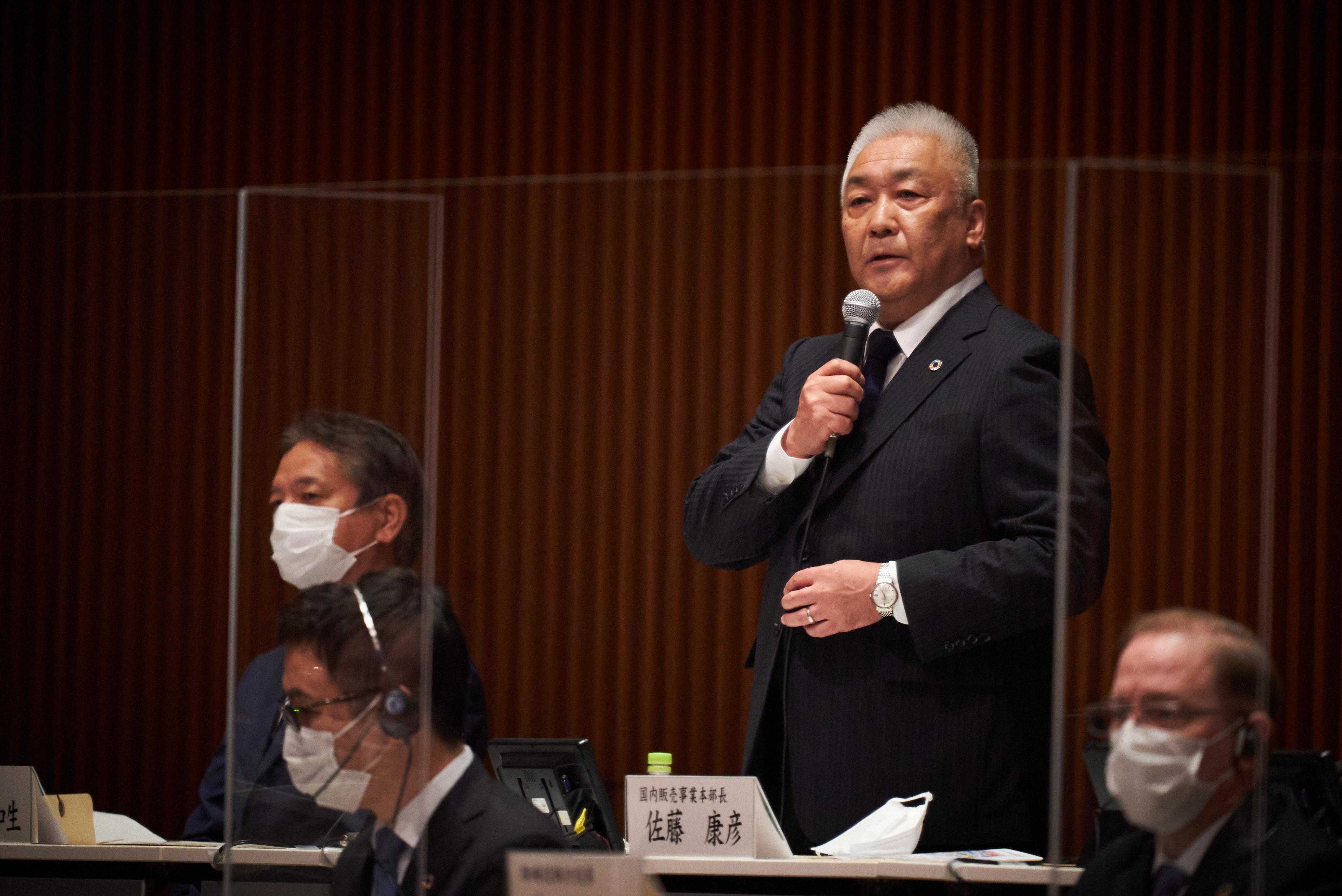
In the period between last year and today’s shareholder meeting, we uncovered improper inspections affecting 7,000 vehicles at 39 outlets nationwide. These are legal violations that must not be allowed to occur.
To identify the causes, we are also visiting service facilities and outlets to hear how workers feel, their troubles, and concerns. These efforts are still ongoing.
One contributing factor was quick inspections, a service in which a car is inspected and returned to the customer within the hour. A one-hour turnaround time was regarded as a required target.
Continual improvement of standard operations through TPS was not adequately followed, even though it was necessary due to changes in cars and mechanics’ experience. We found a lack of continuous improvement and personnel development.
We also learned that this situation could have been prevented through closer coordination between the sales staff who make inspection appointments and the mechanics who service cars.
In reality, these genba had prioritized getting the job done over TPS, safety and security, and providing the quality that ensures customer peace of mind.
Dealerships are part of Toyota. We will continue working with dealerships to create better outlets that help to bring smiles to our customers.
The future a decade from now
Toyota seeks to transform itself into a mobility company amid intense environmental changes stemming from CASE technologies and the push toward carbon neutrality.
The meeting’s final question dealt with Toyota’s vision for the next five to ten years.
Responding to the question were Executive Vice President Maeda and Operating Officer James Kuffner, who also serves as CEO of Woven Planet Holdings.
Masahiko Maeda, Executive Vice President
Up to this point, Toyota has grown within the established business model of the automotive industry.
However, the automotive business is now on the verge of transformation through CASE.
We need to become a company that provides society with all kinds of mobility services and values.
To that end, we should grow as a service platform provider that openly collaborates with various industries and companies. I believe this will contribute to our mission of producing happiness for all.
James Kuffner, Chief Digital Officer and CEO of Woven Planet Holdings
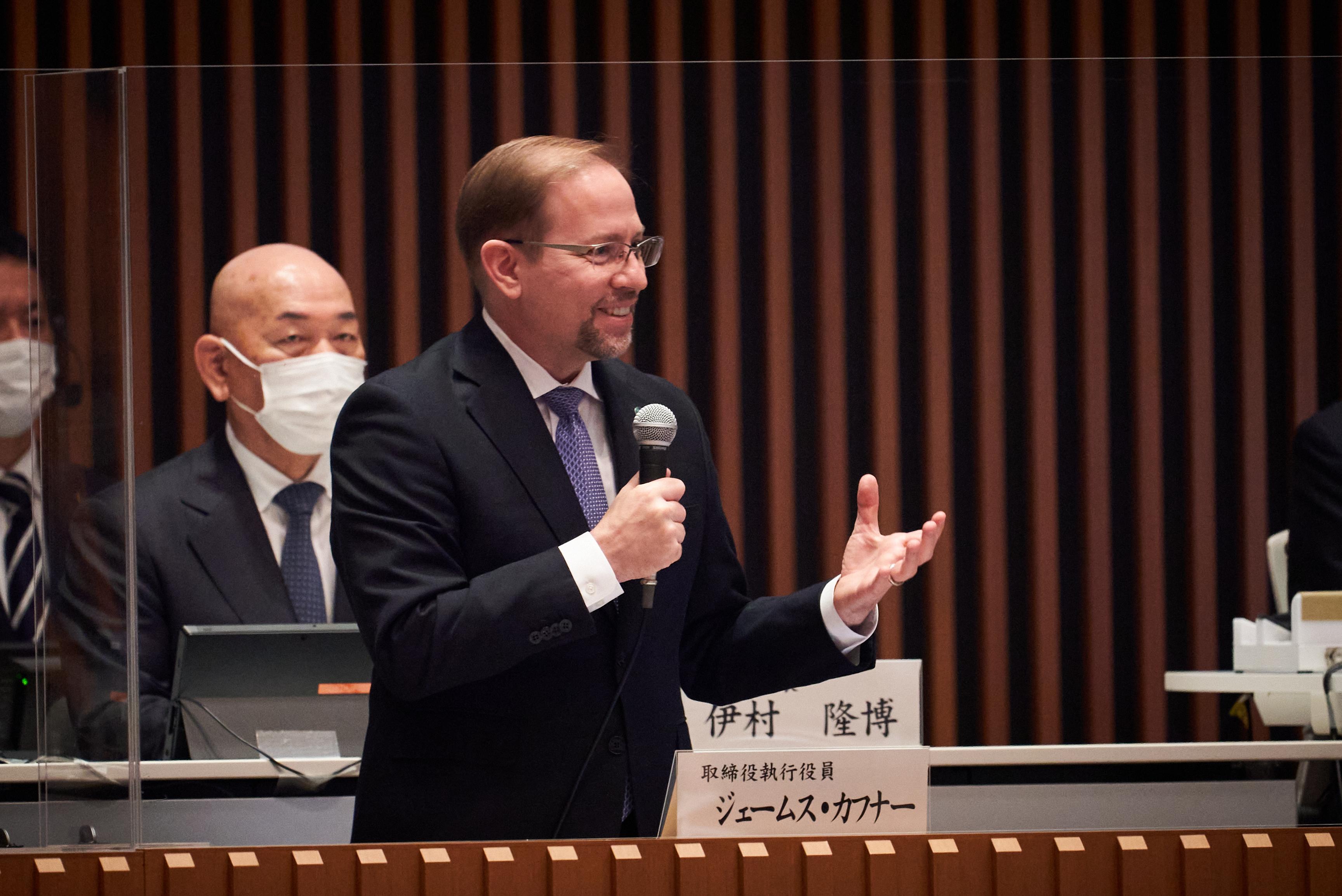
The mobility needs of the world are changing rapidly. We are expected to have 10 billion people on earth by 2050.
Experts predict that by 2030 there may be a 60% increase in the distance traveled by vehicles even if personal ownership of vehicles goes down.
That is why new safe, sustainable mobility technology and mobility services are needed in all parts of the world.
Toyota and Woven Planet are developing a new software platform called Arene that we hope to ship to production by 2025.
Arene will provide a strong foundation for delivering new mobility services and value to customers who expect digital experiences.
Toyota is also building Woven City, a test course for accelerating mobility product development.
Specifically, Woven City will first test new technologies in automated driving, advanced safety, sustainable energy, and smart logistics, together in a real-world living laboratory.
Ultimately, Woven City aims to support the well-being of people and the planet by expanding mobility to support the future fabric of life.
I’m really excited about how new technology by artificial intelligence and new mobility services will enhance the lives of so many future customers worldwide.
We have many challenges ahead, but I believe that together, we will be able to transform Toyota into the world’s leading trusted mobility company.
The second article on the Q&A session shares responses regarding Akio’s possible successor and his ideas about passing the baton to the next generation.

